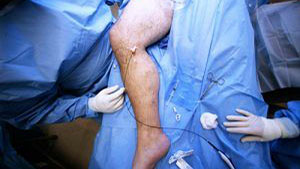Pre-Treatment Instructions
Understanding what to expect before vein treatment is crucial for optimal outcomes. Please follow these pre-treatment instructions carefully:
Before Your Radiofrequency Ablation Procedure
- Pre-Procedure Communication: Our team will contact you prior to your scheduled procedure to address any questions and provide a prescription for an oral sedative. Please bring this sedative with you on the day of your procedure.
- Attire: We will provide a pair of loose, comfortable shorts for your treatment.
- Transportation: As you will receive a local anesthetic and an oral sedative, you will not be able to drive post-procedure. Please arrange for someone to drive you home. While the procedure itself takes approximately one hour, expect to be in the office for about two hours.
- Dietary Guidelines: Stay well-hydrated the day before your procedure. We recommend consuming a light meal one to two hours before your appointment. Do not arrive on an empty stomach.
- Post-Procedure Compression: A compression wrap will be applied to your leg after the procedure, which should be worn for the first 48 hours. You will receive instructions on its removal.

